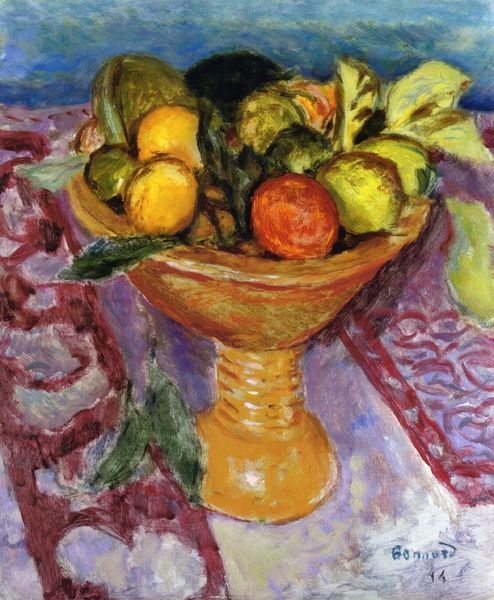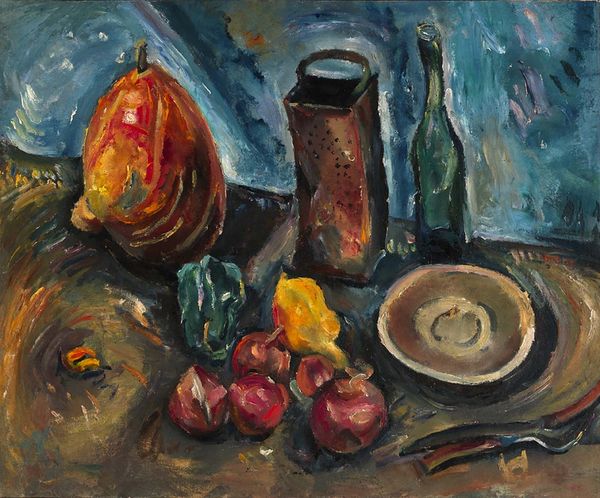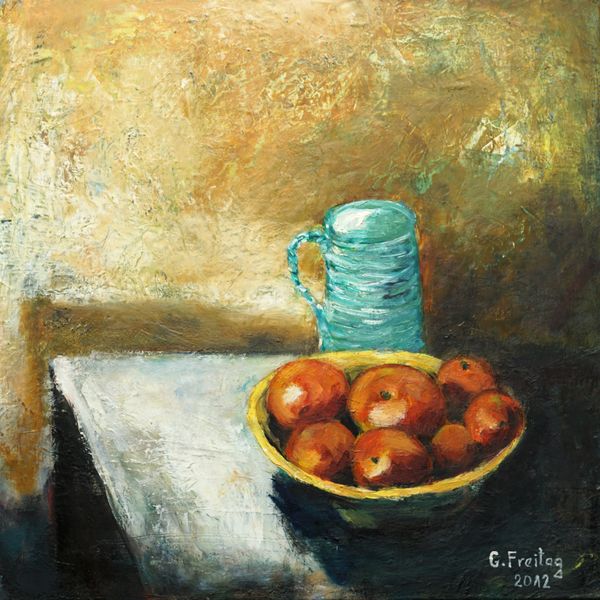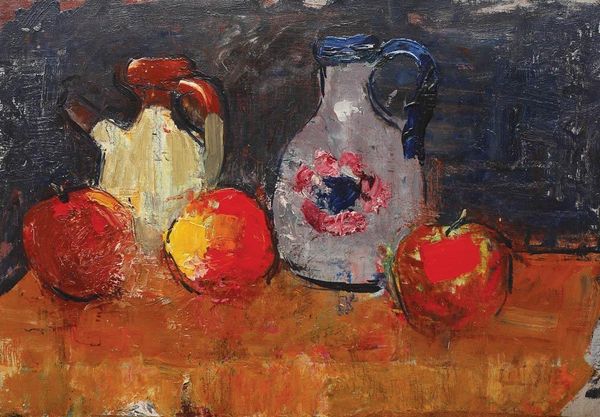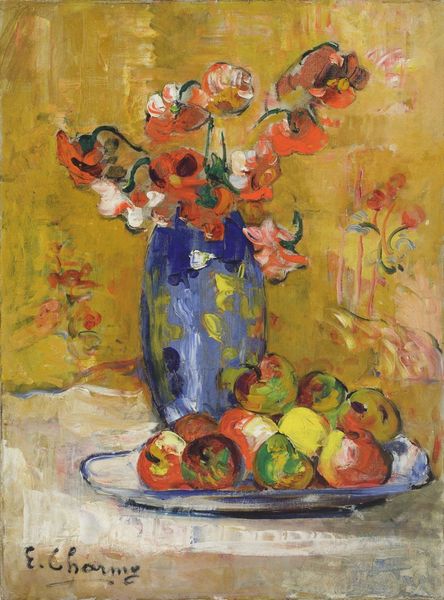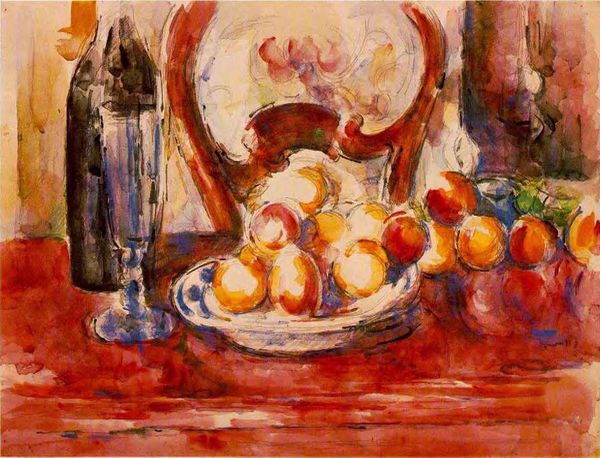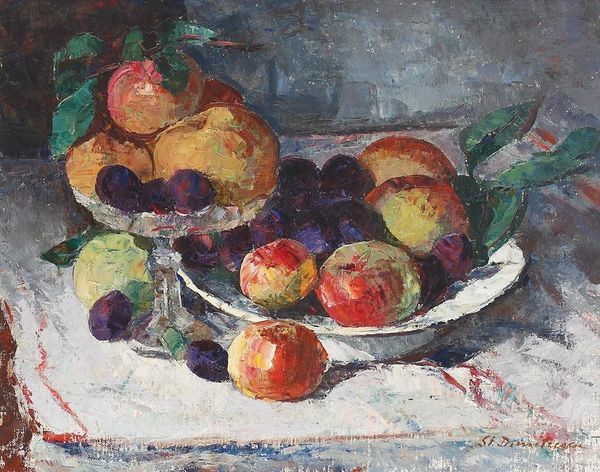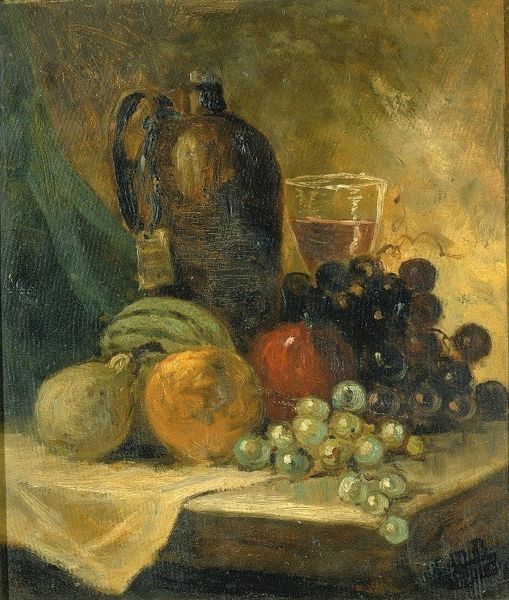
Copyright: Public domain
Editor: Here we have Childe Hassam's "Still Life, Fruits," created around 1908. The first thing that grabs me is how the central still life seems to almost bleed into the landscape on either side, blurring boundaries. How would you interpret this piece? Curator: The painting presents an interesting tension between the cultivated and the natural. Hassam frames a traditional, bourgeois subject - fruit displayed as a sign of wealth and leisure - with views of, ostensibly, an orchard. The production of that fruit, the labor of its harvest, the specific agricultural practices involved are all simultaneously present, but also veiled, literally framed out to either side. It asks us, where does this bounty come from? Editor: So, you're saying the composition highlights not just the fruit itself, but also the hidden processes behind its appearance on the table? Curator: Exactly. And think about the medium: oil paint, a substance itself reliant on extraction and industrial processes. Hassam's brushstrokes, though impressionistic, don't obscure this materiality entirely. Instead, they create a surface where the fruits seem almost to vibrate, acknowledging their connection to a larger system of production and consumption. The canvas is very clearly just a canvas, thickly coated with processed pigment. Editor: I see what you mean. The texture isn’t hidden, it's almost flaunted. Does the “Plein-air” style relate here? Curator: The ‘en plein air’ technique ties into this. Supposedly painting from direct observation ties the fruits back to where they came from and comments on how they were grown and who the human hands that worked to grow them were, which we may never truly know but the artist hints at. It draws attention to how such “still lives” are actually the end result of complex labor and natural resources. Do you notice how the vessels holding them are prominently displayed? Are those resources, tools? Editor: Now that you mention it, it feels like he’s drawing our attention away from just the beauty of the fruit to its origins. I hadn't considered that the act of painting itself is part of that cycle. Curator: Precisely! By calling attention to the materials and their relationship to their surrounding scenes and medium the art is on, Hassam prompts us to consider the economic and environmental impact embedded within something as seemingly simple as a still life. Editor: This has completely changed how I see still life paintings! It's about so much more than just pretty objects. Curator: Indeed! It's a reminder that every artwork, every object, is connected to a network of materials, labor, and consumption. It might give one “food for thought”.
Comments
No comments
Be the first to comment and join the conversation on the ultimate creative platform.
